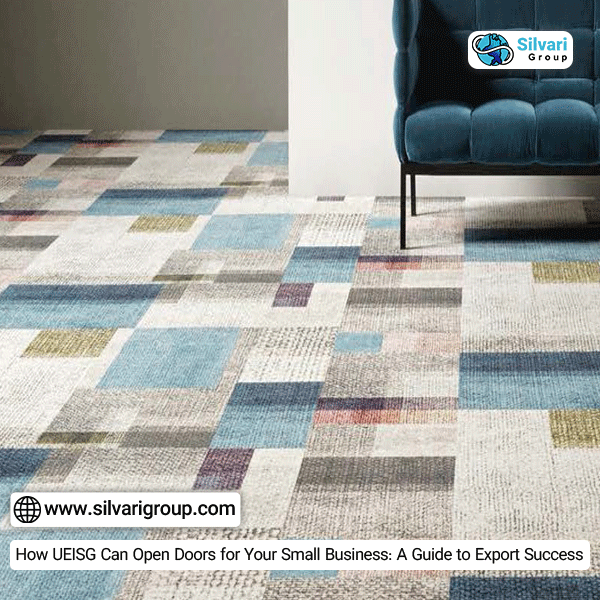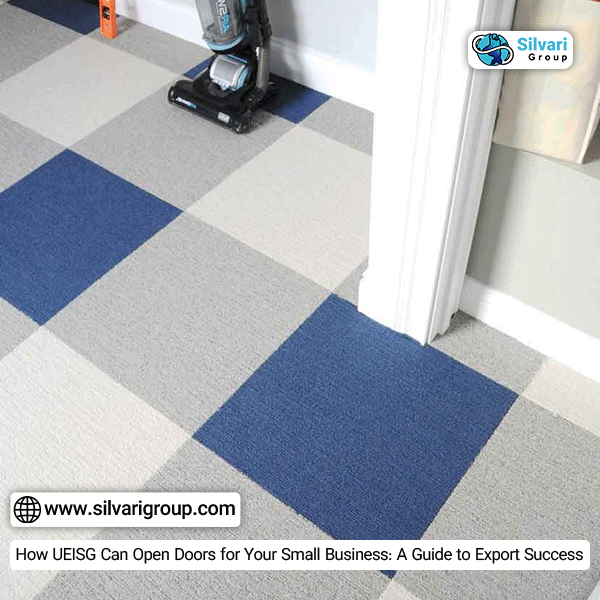What are carpet tiles? Carpet tiles are innovative flooring solutions that combine functionality with style, making them an ideal choice for both residential and commercial spaces. They offer numerous advantages, including easy maintenance, remarkable durability, and a variety of design options to suit any decor. Understanding the different types of carpet tiles available can help you make an informed choice for your project.
Click to use Silverigroup personal shopper services
Additionally, knowing how to properly arrange carpet on ceramic tiles is essential for achieving a cohesive look within your space. As you explore the pricing and options for purchasing carpet tiles, you’ll find that platforms like Silvary Group provide a comprehensive selection and valuable insights to guide your decision-making process. Whether you’re renovating or updating your space, carpet tiles offer a practical and stylish solution.

Advantages and maintenance of carpet tiles
Advantages:
- Ease of Installation: Carpet tiles are designed for easy installation, often requiring no glue or staples. This makes them suitable for DIY projects.
- Versatility: Available in various colors, patterns, and textures, carpet tiles can be arranged in countless ways, allowing for personalized designs that suit different spaces.
- Durability: Made from robust materials, carpet tiles are resistant to wear and tear, making them ideal for high-traffic areas like offices and commercial settings.
- Easy Replacement: If a tile becomes stained or damaged, it can be easily replaced without needing to replace the entire carpet, saving time and money.
- Sound Absorption: Carpet tiles provide excellent sound insulation, helping to reduce noise levels in busy environments.
- Comfort: They offer a cushioned surface that enhances comfort while walking or standing, making them suitable for areas where people spend a lot of time.
- Low Maintenance: Carpet tiles are generally easier to clean than traditional carpets. Regular vacuuming and occasional spot cleaning are usually sufficient to maintain their appearance.
Maintenance:
- Regular Vacuuming: To keep carpet tiles looking fresh, vacuum them regularly to remove dust, dirt, and debris.
- Spot Cleaning: Address spills and stains immediately with appropriate cleaning solutions. Blot the area rather than rubbing to avoid further damage.
- Deep Cleaning: Periodically, use a carpet cleaner or professional service for deep cleaning to maintain the tiles’ appearance and longevity.
- Rotate Tiles: If possible, rotate the tiles occasionally to ensure even wear, especially in high-traffic areas.
- Check for Damage: Regularly inspect tiles for signs of damage or wear, and replace any that are compromised to maintain a cohesive look.
By taking advantage of these benefits and adhering to a proper maintenance routine, carpet tiles can enhance your space while remaining functional and stylish for years to come.

Types of carpet tiles
- Loop Pile Carpet Tiles: These tiles feature uncut loops of fiber, providing a durable surface that is resistant to wear. They are ideal for high-traffic areas and often have a textured appearance.
- Cut Pile Carpet Tiles: Made by cutting the loops of fibers, these tiles are softer and more luxurious underfoot. They are available in various styles, including plush and Saxony, and are great for residential spaces.
- Frieze Carpet Tiles: With tightly twisted fibers, frieze carpet tiles offer a casual, textured look. They are durable and resistant to crushing, making them suitable for both homes and offices.
- Carpet Planks: These long, rectangular tiles can be laid in various patterns for a unique look. They often mimic the appearance of hardwood or laminate flooring.
- Commercial Carpet Tiles: Designed for high-performance areas, these tiles are made from tough materials that withstand heavy foot traffic and are often stain-resistant.
- Eco-Friendly Carpet Tiles: Made from recycled or sustainable materials, these tiles cater to environmentally conscious consumers and provide an eco-friendly flooring option.
These various types of carpet tiles allow for creative design solutions while meeting specific functional needs for different environments.
Click to buy citric acid from Silvairgroup
Matte carpet tile
Matte carpet tiles have a non-reflective finish that offers a more subdued, natural look. They are ideal for creating a cozy and inviting atmosphere in residential settings as well as professional environments. The matte surface helps to hide dirt and stains, making maintenance easier. Additionally, these tiles enhance sound absorption, contributing to a quieter space. Matte carpet tiles are available in a variety of colors and textures, allowing for versatile design options while ensuring a sophisticated aesthetic.
Glossy carpet tiles
Glossy carpet tiles feature a shiny, reflective finish that can add a touch of elegance and modernity to any space. They are often used in contemporary and stylish interiors, as they create a visually striking appearance. The glossy surface can help to amplify light in a room, making it feel more open and airy. However, it is important to note that glossy tiles may require more frequent cleaning to maintain their shine, as they can show dirt and footprints more easily compared to matte options. Glossy carpet tiles are available in various colors and patterns, allowing for creative design possibilities.

Guide to arranging carpet on ceramic
Arranging carpet on ceramic tile can enhance the aesthetic appeal of a room while providing comfort. Here is a step-by-step guide to help you through the process:
- Choose the Right Carpet: Select carpet tiles or area rugs that complement the ceramic tile in color, pattern, and texture. Ensure that the carpet is designed for compatibility with hard surfaces.
- Prepare the Surface: Thoroughly clean the ceramic tiles to remove any dust, dirt, or grease. This will help the carpet adhere better and prevent slipping.
- Measure the Area: Measure the dimensions of the space where you will lay the carpet. If using tiles, calculate how many will be needed. For area rugs, ensure you have the right size to cover the intended area adequately.
- Use an Underlayment (if necessary): Consider using a non-slip underlayment or rug pad to prevent the carpet from moving on the ceramic surface. This will also provide added cushioning.
- Layout Planning: Before installation, lay out the carpet tiles or rug in the desired configuration without adhering or securing them. This allows you to visualize the arrangement and make any adjustments as needed.
- Start Installation:
- For Carpet Tiles: Begin from the center of the room and work your way outwards. Use adhesive or a peel-and-stick backing for added stability, ensuring the tiles are aligned properly.
- For Area Rugs: Place the rug in the designated area, ensuring it is centered and positioned where desired.
- Secure the Edges: If using tiles, press down firmly along the edges to ensure they adhere well. If using rugs, adjust to ensure they lay flat and do not curl at the edges.
- Finishing Touches:
- Vacuum the installed carpet tiles or area rug to remove any debris or fibers that may have surfaced during installation.
- Adjust the positioning of tiles or rugs to ensure a neat appearance.
Click to buy antique products from Silverigroup
By following these steps, you can successfully arrange carpet on ceramic tiles, creating a stylish and comfortable flooring solution that enhances your space.
Necessary tips for buying carpet tiles
When purchasing carpet tiles, consider the following essential tips to ensure you choose the right product for your needs:
- Determine Your Purpose: Identify the primary use for the carpet tiles. Are they for a residential space, office, or commercial area? Different environments may require varying durability levels and styles.
- Select the Right Type: Familiarize yourself with the various types of carpet tiles, such as loop pile, cut pile, and frieze. Choose the type that best suits the intended use and aesthetic preferences.
- Consider Color and Texture: Choose colors and textures that complement your existing décor. Remember that darker colors may hide stains better, while lighter colors can create a more open and airy feel.
- Check the Tile Size: Carpet tiles come in various sizes. Ensure you select a size that fits well in your space and allows for easier installation and arrangement.
- Look for Quality and Durability: Pay attention to the material and construction of the tiles. Higher-quality tiles may be more costly but can last longer and withstand heavy foot traffic.
- Evaluate Maintenance Needs: Consider how much effort you’re willing to invest in maintenance. Some tiles may require more frequent cleaning, so choose accordingly.
- Request Samples: Before making a final decision, obtain samples of your selected carpet tiles. This allows you to see how they look in your space and ensure they meet your expectations.
- Read Reviews and Ratings: Research brands and products by reading customer reviews. Look for feedback on durability, appearance, and ease of installation.
- Calculate a Budget: Determine your budget beforehand and explore options within that range. Don’t forget to include installation costs, if applicable.
lick to buy industrial products from Silverigroup
By following these tips, you can make an informed decision when buying carpet tiles that perfectly fit your needs and preferences.
The price of buying carpet tiles
The price of carpet tiles can vary significantly based on several factors, including:
- Material Quality: Higher-quality materials such as nylon or wool tend to be more expensive than polyester or other synthetic options. Investing in quality can lead to longer-lasting tiles.
- Brand and Design: Well-known brands or designer collections may command higher prices. Unique designs and patterns can also influence cost, as customized or specialty tiles are often pricier.
- Tile Size: Larger tiles may be more cost-effective per square foot, but smaller tiles can offer greater flexibility in design and arrangement, often at a higher total cost.
- Commercial vs. Residential: Commercial-grade tiles typically have a higher price due to their enhanced durability and construction designed to withstand heavy foot traffic.
- Bulk Purchases: Buying in bulk can result in discounts. Consider purchasing a larger quantity if planning to cover a significant area.
- Additional Costs: Don’t forget to account for installation costs, underlayment, and maintenance products, which can add to the overall expense.

On average, carpet tiles can range from 1to1to5 per square foot, but prices can go higher for premium products. It’s essential to compare options and consider what best fits your budget while meeting your practical needs.
final word
What are carpet tiles & when should you use them? Carpet tiles are versatile flooring options that offer numerous advantages, including ease of maintenance, durability, and design flexibility. They come in various types, allowing you to choose the right style for your space, whether for residential or commercial use.
When arranging carpet on ceramic tiles, it’s essential to follow a proper guide to ensure a seamless transition and aesthetic appeal. Additionally, the price of carpet tiles can vary based on material and design, making it important to explore your options and budget effectively.
For a wide selection of carpet tiles and expert guidance, visit the Silvary website, where you can find the perfect flooring solution that meets your needs and enhances your interior décor.

